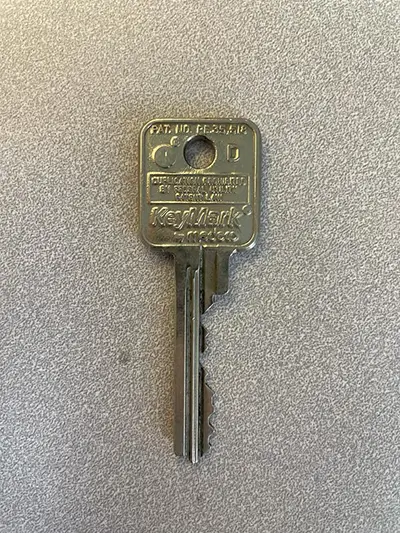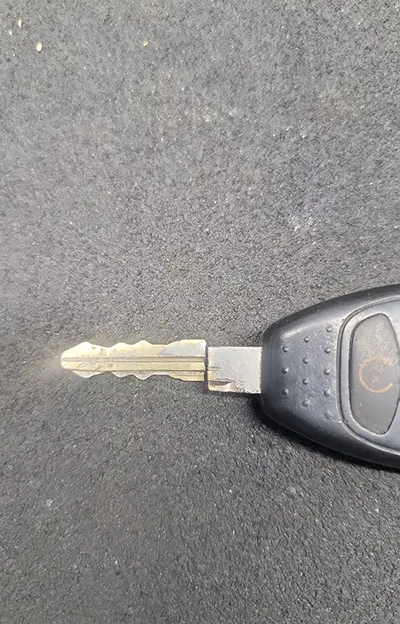 Our security architecture is built on complex mechanisms that are the basic parts of keys and locks. They serve as essential barriers against illegal entry, protecting our private places and belongings, and underscoring their relevance every day. Despite their crucial function, keys breaking in locks is a frequent problem, leading to interruptions and security risks. This article explores the causes of these breaks, providing analysis and advice on how to avoid them in the future.
Our security architecture is built on complex mechanisms that are the basic parts of keys and locks. They serve as essential barriers against illegal entry, protecting our private places and belongings, and underscoring their relevance every day. Despite their crucial function, keys breaking in locks is a frequent problem, leading to interruptions and security risks. This article explores the causes of these breaks, providing analysis and advice on how to avoid them in the future.
The bow, shoulder, blade, and bitting are the different parts of a key, and each plays a specific part in how a lock works. Furthermore, because each form of key serves a particular purpose in terms of security, it is crucial to comprehend how different key types—such as pin tumbler, wafer, and tubular keys—interact with the locks that they fit into. Understanding the many types of keys and their complex operations can help to avoid disruptions brought on by broken keys.
Keys' durability is frequently jeopardized by wear and tear, material deterioration, and even manufacturing flaws. Keys can become less secure with repeated use, and manufacturing flaws might provide weaknesses. Making sure that keys are produced with quality and using them carefully and precisely will greatly reduce the danger of damage. It is crucial to match the right key to the lock since using the wrong key might harm both the key and the lock. Broken keys can result from using too much force or incorrect technique when entering, which emphasizes the importance of being careful and methodical when using keys.
In conclusion, minimizing the danger of key breakage and ensuring security and convenience in our daily lives require an awareness of the intricate composition and operation of keys and locks. We can protect against the inconveniences and security risks caused by damaged keys by recognizing the typical causes and taking the appropriate preventive steps, resulting in a peaceful and secure living environment.
How do forcible entry and manufacturing defects lead to broken keys?
The integrity of keys is crucial in the maze of security and access. Forcible entrance and manufacturing flaws, which both jeopardize the structural integrity and usability of keys, are the two most common causes of broken keys. When keys are operated with too much force, it is referred to as forced entry, and this behavior inevitably results in broken keys. Keys are delicate objects made to gently maneuver through the complicated pin systems of locks. Excessive pressure disturbs this delicate balance, which causes keys to snap. In order to prevent any unplanned interruptions and any security breaches, it is crucial to exercise patience and use the proper approaches when using keys.
Manufacturing flaws are also harmful to the longevity of keys and are a major cause of key breakage, despite being frequently disregarded. Keys have intrinsic vulnerabilities as a result of flaws and abnormalities that occur throughout the manufacturing process, leaving them vulnerable to breaking when used frequently. Even though they are minute, these flaws weaken the metal's integrity, making the key brittle. This emphasizes the significance of upholding quality and accuracy in crucial manufacturing, ensuring that every item is free from flaws and equipped to endure the demands of regular use. A careful production process combined with routine quality inspections can greatly lower the occurrence of damaged keys, enhancing longevity and dependability.
In summary, maintaining the integrity of keys is a complex task requiring careful use and rigorous production standards. We can significantly extend the life of our keys and, hence, more effectively secure the globe by reducing forced entry through good technique, patience, and the elimination of manufacturing flaws through quality control. Understanding and treating the fundamental causes of key breakage is becoming more and more important as we continue to rely significantly on keys to secure our spaces and pursue more security and convenience.
What are the preventative measures and solutions to keys breaking in locks?
Protecting against key breakages is of utmost importance in the world of security. The functionality of locks and keys depends not only on their reliability but also on users' observance of proper usage and routine maintenance. Key utilization techniques are essential. It entails using the proper techniques while turning and inserting keys, making sure the key is made for the particular lock, and refraining from using excessive force. It is crucial to use the correct key and not force it because doing so prevents damage to both keys and locks and ensures proper operation.
Another essential preventive precaution is routine maintenance of locks and keys. Locks must be regularly cleaned and lubricated in order to perform properly and last a long time. It is wise to routinely check locks and keys for any indications of wear, deformities, or damage, allowing for prompt interventions and replacements if needed and preventing sudden failures or breakages as a result.
The selection of high-quality keys and locks is also crucial. Choosing reliable, long-lasting locks and keys from respected brands ensures dependability and security. Such high-end products are less likely to be damaged or worn out, giving users peace of mind. In order to guarantee the longevity and dependability of security systems, it is essential to be knowledgeable about and invest in renowned brands and types of locks and keys.
In conclusion, preventing key breakage requires a complex strategy that includes using keys properly, performing routine maintenance, and spending money on high-quality products. A holistic approach to these preventative measures and solutions helps to create a secure and hassle-free workplace by ensuring the longevity and dependability of keys and locks. By putting these tactics into practice, we can greatly reduce the annoyances and potential security dangers brought on by keys breaking in locks, opening the way for a more safe and peaceful way of life.
How professional locksmiths can help fix keys that break into locks
 A frantic, frustrated moment might result when a key cracks within a lock. The natural temptation could be to quickly remove the broken piece, but such hasty actions could endanger the lock even more. Although employing straightforward instruments like pliers or tweezers might seem like a quick remedy, an unskilled hand frequently makes the issue worse and renders the lock useless.
A frantic, frustrated moment might result when a key cracks within a lock. The natural temptation could be to quickly remove the broken piece, but such hasty actions could endanger the lock even more. Although employing straightforward instruments like pliers or tweezers might seem like a quick remedy, an unskilled hand frequently makes the issue worse and renders the lock useless.
In such circumstances, the requirement for qualified locksmiths becomes critical. Expert locksmiths are equipped with the knowledge, skills, and instruments necessary to carefully handle broken keys while maintaining the integrity of the lock. In addition to ensuring successful removal of the shattered piece, a professional method also guards against further harm that could arise from careless handling.
Expert locksmiths' critical service is crucial in minimizing damage and quickly reestablishing security when keys break in locks. The knowledge of a licensed locksmith is invaluable because it guarantees that the lock will continue to work as intended after intervention, eliminating any doubts and potential dangers that can result from ill-prepared attempts at repair.
In conclusion, it is critical to understand the causes of key breakdowns and to adhere to appropriate preventive measures and solutions. When you consider this, it becomes quite clear how important it is to prioritize professional assistance over clumsy attempts. The cornerstones of avoiding such uncomfortable circumstances and effectively protecting one's security apparatus are awareness and appropriate usage.
By entrusting qualified locksmiths with these jobs, we can ensure a quick, effective resolution that increases the durability and dependability of our security systems. We safeguard the integrity and efficacy of our security systems by endorsing and using expert locksmith services, which promote a safer, more secure environment. The ultimate goal is to integrate knowledge, awareness, and professional competence to raise the bar for ease and security in our day-to-day lives.




